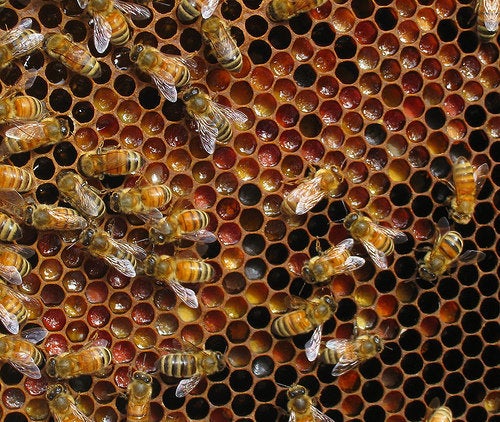
This past weekend, people in 188 countries at 7,000 events united as one voice in the fight against oil, gas and coal, rising greenhouse gases and a warming world.
"Kick coal and oil out" was heard around the globe. Change is the only thing constant in life and when it comes to our insatiable addiction to petroleum products, the time has come to move beyond an antiquated, toxic and now life-threatening source of energy.
Last week, two major solar farms received approval from the feds creating 1,000 jobs and power in Southern California for over 213,000 homes. Remember that innovation is our best friend and America's Recovery Act is pouring $90B into clean energy, smart grids, energy efficiency, electric cars, renewable power from the sun, wind, ocean waves, geothermal and manufacturing plants in the U.S.
One of the joys of being a biologist is the privilege of studying nature. All life on this planet whether deep under the sea or on the top of Mt. McKinley, and everything in between, is interconnected and temperature dependent. The emphasis on Nature's interconnections is, I believe, why the biology students at Cal Lutheran University enjoy my classes.
Global warming is having a deleterious affect on the 20,000 known species of bees around the globe. And destruction of natural habitat has been rampant in recent decades. There are over 5,000 native species of bees in North America that are responsible for pollinating the lion's share of plants between the Arctic and the trees of the Sonoran desert.
Bumblebee populations have been hit particularly hard. Since 1999, the rusty-patched bumblebee, whose habitat spanned from Quebec to Vermont, has disappeared along with four other bumblebee species. Franklin's bumblebee of northern California and southern Oregon is also now believed to be extinct. Large populations of western bumblebees that inhabited the entire west coast of North America have severely declined in the past decade.
Last week an article in The New York Times reported a discovery that the newspaper claimed to be the culprit in the death of a couple hundred billion honeybees worldwide. There's no question that this DNA-based virus is linked to the Nosema ceranae fungus. This virus/fungus combination proliferates in cool, damp weather, thrives in the gut of overwintering bees and disrupting their nutrition.
When complex biological systems begin to unravel as in the case of the dying honeybees there is rarely one cause or smoking gun. Rather, it's usually a combination of factors acting in concert. In the bees' world, there are many problems. Anyone who thinks that there's no affect on releasing five billion pounds of pesticides including known toxic neonictinoids into the biosphere, each and every year is daft and they're eating poisons daily.
Moreover, these poisons are getting to the bees first and they are dying. The honeybees are acting, as modern-day canaries in coalmines and government regulatory agencies are not paying attention. The bees are dying from the very foods that we are eating. Organic foods protect the bees and they protect us -- you are what you eat!
Honeybees do so much more than just pollinate almost everything from apples to zucchinis. Did you know they also pollinate the ingredients that go into 50 percent of all ice cream flavors? Or that bee venom from a bee's stinger is a potent anti-inflammatory and pain medicine used to treat multiple sclerosis, rheumatoid arthritis, fibromyalgia, tendonitis and other debilitating autoimmune diseases?
This past summer, we saw the effects of global warming sky-rocket the price of wheat and barley by as much as 75 percent on the world market when Russia was enveloped by drought and fires, western Canada deluged by rain and Australia plagued with epic locust infestations.
But global warming is far more pervasive than the obvious symptoms of bad weather and food shortages. For the first time since the Civil War (1861-1865), the price of cotton has surged above $1. Flooding in Pakistan (fourth largest producer) and China (the largest producer and importer) has created a cotton demand that's outstripping the supply. This spike in price is exacerbated by the fact that honeybees pollinate cotton and billions of dead honeybees have created a demand for bees that can't be met.
Eighteen thousand six hundred farms in the U.S. grow cotton producing clothing, and food like cottonseed oil, shortening, salad dressing, crackers, cookies and chips worth over $27B annually. The cotton industry uses 75 million pounds of pesticides each year and according to the EPA, a dozen of these pesticides are carcinogenic.
Global warming has altered the weather patterns reducing the snowfall on the Southern Rockies, which in turn supplies melt waters to the Colorado River and 25 million people in the southwest. Snowpacks are melting three weeks earlier causing glacier lilies to emerge at least a couple weeks sooner. A climate-driven mismatch is now occurring as the bumblebees that pollinate the lilies are wakening-up two weeks too late. The fate of the lilies is in jeopardy.
It's happening around our nation. In Maryland, honeybees which rely heavily on the first bloom to generate copious amounts of honey to sustain the hive for the year are having to quickly change their diets because plants are flowering by as much as four weeks earlier.
In Maryland, it's evident from their honey, which traditionally was a rich, red, earthy flavor from the American tulip trees. Now the bees are producing a lighter more fruity honey as they are relying upon later-blooming black locusts trees to make a living.
The changes in the Rockies and Maryland have happened fast, both within two decades. The trees, bees and other critters are telling scientists that the Earth is unequivocally warming up.
Global warming is a citizen's issue. That means each of us is required to lend a helping hand.
Join the HoneyBeeNet online and help scientists across North America track our bees and flowers as we are all inexorably linked in the dance of survival.
Dr Reese Halter is a science communicator: voice for ecology, conservation biologist at Cal Lutheran University and public speaker. His latest book is The Incomparable Honeybee. Contact him through www.DrReese.com
